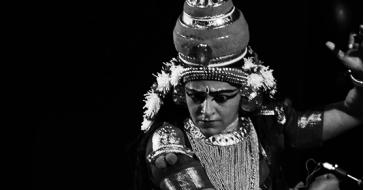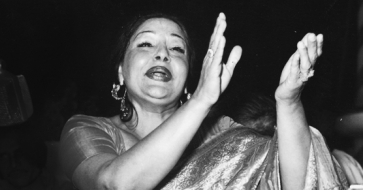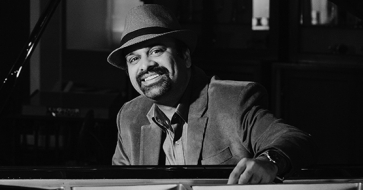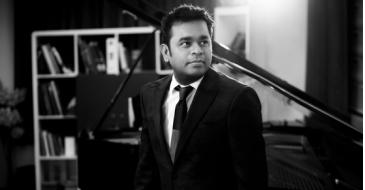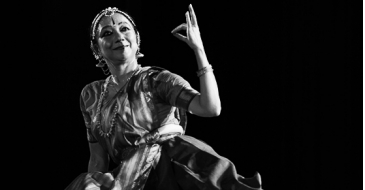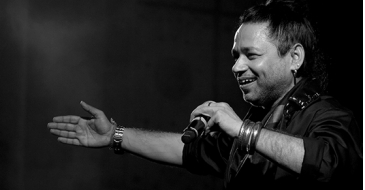Considering the film has already been a part of film festivals, national and international, were you, in a sense, confident of its success?
Firstly, I don’t think we can say success yet because it has literally been only six days since its release in theatres. Films like these, as you know, don’t really stay for more than a week or so. I guess therefore it depends on what exactly you mean by success.
Let me ask you that question; what would you consider successful, speaking specifically about A Death in the Gunj?
Honestly, I don’t know anymore; I’m quite confused. I believe apparently there is something these days about how much the cost is and how much you are able to receive from it. To tell you the truth, it’s all terribly convoluted; I also don’t know how to define success. I’m really pleased that by and large I’ve got positive feedback from both people and publications.
The producers too, seem to have recovered their money. I know for a fact that it’s very difficult to make money with this kind of content these days. People don’t come to the theatre as much. Basically, I don’t concern myself too much. I’ve done what I could in the best way that is possible by me…
I’m curious about your own understanding of commerce and art in the business of making cinema? Did you think a lot about it?
Let me break this into a few parts.
Because this film is somehow wrought from my childhood and memories - I feel so much of our emotional core as adults forms there; of course it changes and layers as we go along - I’m trying, through the film, to capture a sense of my own childhood. In that sense, I’ve tried to be true and authentic to that period, and I have taken decisions accordingly.
There are other things pertaining to the script; the feeling that I wanted to share, the points I wanted to put across and that dictated the decision-making process.

The other advantage I have is that with a mother who is a filmmaker and who has made films not necessarily mainstream in content, I’ve had the opportunity of exposure; meaning, I’ve seen her struggle to put things out and because of that, my decisions were very deliberate.
I also knew clearly that I was not making a film with some of the conventions of mainstream cinema; I knew it was a niche kind of film and our budgets were based on that.
I guess when a loved one tells you a story in your childhood and you hear it again and again, it imbues that story with so much emotion and feeling; it brought alive a world and a time. A Death in the Gunj was not only my childhood or nostalgia; it was also my attempt to capture my view of my parents’ imagined youth
I knew that I wanted my audience, people who watched the film to be engaged in it and I wanted to craft my ideas as interestingly as possible.
It helped also that while I was writing it, I knew that we didn’t need more than a few locations, I consciously hadn’t planned for things that required for elaborate equipment; actually, it didn’t need any of that.
Basically, I think that awareness in art is important. It would be foolish, otherwise. I was aware of all of the above… But really, apart from that, everything in the film was purely dictated by time, place and character.
Was making a film a planned decision? Or did it just happen along the way?
I never thought I’d direct a film; in fact, I never wanted to be an actor either. Having said that, I’m very glad I ultimately ended up pursuing it. I’m grateful for those opportunities.
But A Death in the Gunj specifically unfolded at a time when I had just had my child. I was working less, partly out of choice, partly out of compulsion. Roles were few and far between and as a result there was possibly more time or it was just a phase of my life when I began wondering about these memories from my childhood. I’d recall family anecdotes, stories – sweet and bizarre –and I thought about how they always represented a certain world in my head. Slowly and steadily, these memories became bigger and bigger…
It also coincided with a time when I spent a month with my father, writer and author, Mukul Sharma, at Gurgaon, while my house was being renovated in Mumbai. Almost naturally, we talked a lot about that time. Something got triggered and I started developing it in my head and before I knew it, I found I had a structure, many of the characters had already been constructed, I knew the beginning and the end... I primarily had to adjust myself to what I found fascinating about the film, the story, and how best I could share it with people. At one point, I remember at my dad’s dining table, I remember saying, “Oh my god! This can be a movie, I can make this into a film.” I remember that moment vividly!
How did you imagine a short story for cinema? What went into that process?
I hadn’t actually read the short story, till much later when I started developing the idea myself. I was really lucky because the author – my father - had narrated it several times to me, over and over again. My mother owned a house in McCluskieganj back in the day and my grandparents lived there. Back in the 70s, my family would make these short trips with friends and family; drive down from Kolkata to enjoy the quiet and the wild. I was very young, so I don’t remember that much. I’ve only heard these stories and I loved listening to them. They fascinated me.
I guess when a loved one tells you a story in your childhood and you hear it again and again, it imbues that story with so much emotion and feeling; it brought alive a world and a time. A Death in the Gunj was not only my childhood or nostalgia; it was also my attempt to capture my view of my parents’ imagined youth.
As a result, the colours, the people in it, were already coloured in - partly through memory, partly through re-creation, partly through the idea of repetition. Of course, a lot of it was also based on my own experiences. I fictionalized it, dramatized it, but in a way, because it was a specific time, specific place and a specific kind of people, those choices are automatically pre-determined.
McCluskieganj, for instance, at that time had these colours; in the cold, it looked a particular way, its people dressed a certain way, their accents were a particular kind...
McCluskieganj, by the way is a stunning place in itself. Honestly, many people didn’t even know about it. They thought it was Macledgunj…
It also helped that with all this, I had great help from a fantastic crew – my DOP who is so talented and brought so much experience to the table, the production designer, the costume designer… We all spent a great deal of time on research, we watched many films together, went through many references, had many conversations, and worked meticulously in translating the story into the cinematic medium.

So, A Death in the Gunj is actually filmed where it belongs, right?
Yes. Let me give you a little history on that village. McCluskieganj, a hilly little town in Jharkhand, originally Bihar, was founded in 1933 by ET McCluskie, from Kolkata. He had this land from the Raja of Bihar, and he invited about 400 Anglo- Indian families to come and settle there and lead an agrarian way of life. The Anglo-Indians came with their guns to make a home in the wilderness. Of course there were also the local adivasis, the tribals in the area along with the local Biharis and it was a fascinating kind of a milieu. The Anglo-Indian community was suddenly thrust upon this world at a time when they themselves had been marginalized within the homeland of India which actually I found very interesting. It was almost like Shutu (short for Shyamal Chatterjee), the protagonist of the film played by Vikrant Massey and his isolation and alienation from his own family. I found that parallel very interesting.
The Anglo-Indians, you see, were not so agriculturally inclined; slowly, they migrated to countries like Canada and Australia. Soon enough, very few were left behind… What remained were the old bungalows that were being taken care of by the adviasis… Basically, by the 70s, it was literally the death of the Ganj, the whole place was dying out... The end of an era. My parents too sold the house in the early 80s because by that time people were coming and stealing door frames, window frames, etc… They were living in abject poverty; there was hardly any power, water. I started talking to my parents, reading old letters from the time, reading stuff and I realized it was difficult to get information on McCluskieganj…
Honestly, we never thought of shooting there; it was, in a sense, decaying. We went looking everywhere – to places in Uttar Pradesh, Maharashtra but somehow we didn’t like anything. Then, one day, someone sent me pictures from McCluskieganj and they were stunning and that did it!
We decided to shoot there and I went back there after 30 years... It was eerie so many things were similar as I’d written even if I hand’t been there for so long. Looking back though, it’s amazing we managed to pull off the shoot of the entire film there. We all stayed in Ranchi and for 31 days, we travelled for nearly two hours, one-way to McCluskieganj for the shoot. It was a challenge but the production team was amazing.
But the best thing was that the place was preserved in time. One could actually use many of the props, furniture and things from that time and that lent it a very authentic kind of a feel.
I am curious about the idea of gaze. As an actor, you are being looked at in some sense, but as a director, you are actually looking through the lens of the camera. What is the shift you are making when you switch from one of these roles to the other and vice versa?
I found it very liberating to be behind the camera. Very honestly, I really never wanted to be an actor. In my early years, my relationship with acting was very different. I was deeply unhappy with everything and I was not as detached as I am maybe now. I hadn’t really come to terms with myself as an actor. You see, when you are acting, your body is not your own, it is your character’s. For instance, just like how people use tools or perhaps a musical instrument, the body becomes like that. At a very frivolous level also, I would say such awareness is built into you over the years. I sometimes envy the assistants or other people who can just wipe their sweat off or tie their hair up because it is hot or whatever it may be, but just be their own bodies you know. With direction, I felt like I was playing make-belief, and everybody else was playing with me; they were with me in it.
You see, when you are acting, your body is not your own, it is your character’s. I sometimes envy the assistants or other people who can just wipe the sweat off or tie their hair up because it is hot or whatever it may be, but just be their own bodies you know. With direction, I felt like I was playing make-belief, and everybody else was playing with me; they were with me in it
Behind the camera, I am making a difference and so many people are helping me, and I can be involved in so many different ways, and I can really be involved with everything that is in the frame.
You said that the idea of A Death in the Gunj emerged when your son was born. Did the film in a way also help you escape the real world into a world of your own?
I have seen my mother before me, and so many other women including my maid, who are constantly juggling between raising children and working. I have worked in a lot of films after the birth of my son. I just feel I am better when I am working, I am a happier person, and that impacts everyone around me. That is just me, and that is how I operate. In fact, I took my son for the shooting in Jharkhand, and my nanny and my younger sister accompanied me… I think that the kind of patience, resilience and hard labour that early motherhood inculcated in me prepared me a lot because before that I would have been less patient or maybe not as strong to just plough on and go through the entire film… Motherhood gives you that kind of tenacity…
Interviewed by Akhila Krishnamurthy
0 comments Comments







